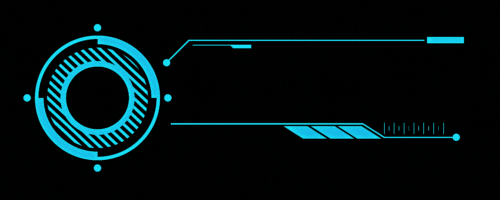Whether you like it or not, it’s nearly impossible to avoid artificial intelligence (AI) at some point in the hiring process.
The most widely-understood AI-powered component of the hiring process is the Applicant Tracking System (ATS), which uses AI to screen candidate suitability for open roles.
But this is not the only hiring aspect in which AI plays a role.
Specifically, a 2021 Forbes article suggests that 99 percent of Fortune 500 companies used “talent-sifting software,” while around 55 percent of human resources teamed used predictive algorithms to aid in their hiring processes.
Certainly, AI-driven hiring processes have issues. Eighty-eight percent of employers surveyed by Harvard Business School said they thought AIs filtered out qualified candidates before their profiles were reviewed by real people.
A recent report from Brookings found troubling results in AI, as well.
“Speech recognition models have demonstrated clear biases against African Americans and potential problems across dialectical and regional variations of speech. Commercial AI facial analysis, aside from being largely pseudoscientific, has shown clear disparities across skin color and is highly concerning for people with disabilities,” wrote Brookings’ Alex Engler.
Certainly, AI has a long way to go before it can be used ethically in the hiring process. But in the meantime, companies are using this technology, so why shouldn’t you also use it to secure a digital advantage in your executive job search?
Here’s how:
 Using ChatGPT
Using ChatGPT
ChatGPT is a chatbot that employs resources inputted by users to create written documents.
Nearly half (46 percent) of jobseekers surveyed by ResumeBuilder.com used ChatGPT to help them write résumés or cover letters. While it’s not a great idea to simply submit the chatbot-generated application materials without revising them, you can use AI to help generate content that best fits what the company is seeking in a candidate.
“I tested ChatGPT as a job seeker by providing the prompt. I asked ChatGPT to identify core competencies based on the targeted role and added four job postings. Now, I have the resources with soft skills and hard skills to create a résumé. It helped me understand my strength, weakness, opportunities, and threat (SWOT) to self-reflect,” said career strategist and coach Sweta Regmi.
 “Beating” the ATS
“Beating” the ATS
Once you’ve written your application materials, prepare them to “pass” the ATS, which screens out applications that don’t match the skills requested in the job posting.
Specifically, tailor your résumé to re-articulate the important skills and qualities mentioned in each job posting to which you’re applying. It goes without saying that to do this, you’ll need to modify your document for every job to which you’re applying. This tailoring habit will not only help you “beat” the ATS but will also appeal to hiring managers when they read your résumé.
“[You] definitely won’t want to keep submitting the same document over and over to multiple companies. Not only will it be harder to beat the ATS because you might not have the exact right keywords from the job description, but any recruiter who sees your resumé will be able to tell if it’s just a generic one that you send to everyone,” said Ken Coleman of Ramsey Solutions.
 Preparing for AI Bots in Interviews
Preparing for AI Bots in Interviews
Another aspect of the hiring process you should prepare for is AI-driven first-round interviews.
Some companies use this screening tool to not only identify if candidates’ answers fit company needs but also to screen their body language, speech, and other factors.
Coach Bernard Marr explains how this screening process works at Unilever, where AI screening interviews have cut down on around 70,000 hours of in-person interviewing thus far. Candidates at this stage are screened for around 30 minutes.
What is the AI screening for?
“We look for people with a sense of purpose – systemic thinking, resilience, business acumen. Based on that profile, the games and the video interview are all programmed to look for cues in their behavior that will help us understand who will fit in at Unilever,” said the company’s chief of HR, Leena Nair.
 Building Your Digital Presence
Building Your Digital Presence
Another way that companies are employing AI is by having it hunt for passive candidates or individuals who aren’t actively searching for a job.
“The talent pool is massive for this group (it’s pretty much everyone out there not in the job search), so AI can quickly zoom in on great candidates, whether they’re looking or not,” said Stuart Rauch for Simplilearn.
So, one way that you can use AI to your advantage is by creating a LinkedIn and keeping it current and active. If the AI is using machine learning to hunt for candidates, the more likely it is to seek you if you demonstrate your thought leadership and expertise in relevant industries.
Then, you might be sent exciting job opportunities, even if you’re not actively seeking them out.
Using AI to Secure a Digital Advantage in Your Executive Job Search
Companies are using artificial intelligence tools to save time and money on their recruitment.
While AI may eventually be a wholly-ethical means to identifying the strongest candidates for jobs, right now, human error and bias come into play in designing these algorithms. So, in order to be “selected” by AI hiring tools, candidates have to know how to play the game to ensure a digital advantage in their executive job search.
If you’re an HR professional or want to more fully understand the biases that may be baked into AI, read our article “AI Won’t Solve Hiring Bias – But People Can.”
https://ivyexec.com/career-advice/2023/the-digital-advantage-in-executive-job-search-mastering-the-rise-of-the-ai/

 Using ChatGPT
Using ChatGPT